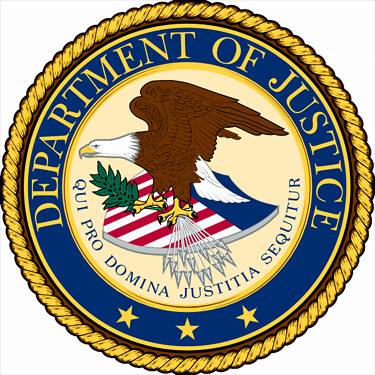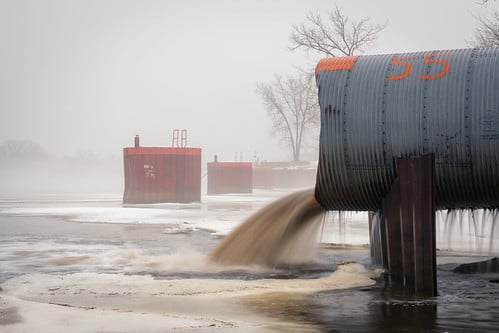Lead and lead-containing materials are among the longest-used materials in construction and industry. Lead has been used in commercial, residential, and ceramic paint; in electric batteries and other devices; as a gasoline additive; for weighting; and other purposes. It also has been recognized as toxic to human health and the environment at least since the Romans, although understanding of the extent and severity of lead hazards has improved greatly in recent decades. Accordingly, environmental, occupational and public health agencies have progressively tightened standards to reduce lead exposures. On August 1, 2023, the Environmental Protection Agency (EPA) proposed to tighten post-remediation clearance levels as low as “non-detect.” The rest of this note discusses EPA’s latest proposal, and provides some context and background.
Read MoreAudit, Compliance and Risk Blog
EPA proposes non-detect lead contamination standards after residential abatement
Posted by Jon Elliott on Tue, Aug 29, 2023
Tags: EHS, EPA, tsca, Hazardous Waste, ESG
Federal Agencies Adjust Civil Penalty Levels for Inflation
Posted by Jon Elliott on Mon, May 15, 2023
Most regulatory laws provide for civil – and sometimes even criminal – penalties for noncompliance. New legislation typically sets penalty levels (“XXX dollars per day of violation” for example), at levels intended to provide meaningful deterrence and punishment for noncompliance. But over time, the relative sting of these penalties declines with inflation. To counteract the possibility that less painful penalties provide less effective incentives for compliance, U.S. law directs most federal agencies to make annual “cost of living” adjustments to maximum available civil penalty levels (there are no provisions for standing periodic adjustments to criminal penalties).
Read MoreEPA-UPS settlement provides reminder to get hazardous waste compliance details right
Posted by Jon Elliott on Fri, Oct 28, 2022
On October 19, 2022 the US Environmental Protection Agency (EPA) and the United Parcel Service (UPS) settled a massive enforcement case covering violations of hazardous waste management requirements under the Resource Conservation and Recovery Act (RCRA) at 1,160 UPS facilities across forty-five (45) states and the territory of Puerto Rico. Most of the identified violations resulted from UPS’ misclassification of the quantities of hazardous waste generated at its facilities, and resulting failures to meet the additional requirements actually applicable at the mis-classified facilities. The national prosecution followed an investigation and subsequent Consent Agreement and Final Order (CAFO) in EPA’s Region 6 (Arkansas, Louisiana, New Mexico, Oklahoma, Texas and 66 Tribal Nations), which developed after enforcement at a single UPS site in Arkansas. The new nationwide settlement also appears in a CAFO, in which UPS agrees to pay more than $5 million in fines and to undertake enhanced compliance programs. The settlement is a good reminder to all organizations generating hazardous waste, that failures to meet RCRA-related administrative requirements can create enforcement liability even if wastes are managed responsibly.
Read MoreTags: EHS, EPA, Hazardous Waste
Regulatory Registers: Your Guide to Navigating Diverse EHS Environments
Posted by Antea Group on Tue, Feb 08, 2022
As our world becomes increasingly connected, companies will continue to seize opportunities for expanding their businesses to new geographies. However, many challenges remain when it comes to understanding local regulations, cultural nuances, and legal applicability considerations. To overcome these challenges, EHS leaders need to gain in-depth knowledge and understanding of the regulatory environment and cultural landscape.
For an EHS manager or even a small EHS team, building and maintaining this knowledge can overwhelm your time and resources. This is where utilizing an EHS regulatory register can change the game. Not only can a register help save time, but it can also ensure accurate, up-to-date information all in one place. If your organization is considering an expansion into new territory, a register to understand the organization’s compliance obligations should be the first task for a smooth, successful operation expansion.
Read MoreTags: EHS, regulatory registers, compliance
Trump Administration Proposes to “Modernize” Federal Environmental Impact Assessments by Narrowing Them
Posted by Jon Elliott on Tue, Feb 25, 2020
The federal Council on Environmental Quality (CEQ) has proposed to revise its regulations administering the National Environmental Policy Act (NEPA) of 1969. NEPA requires federal agencies to assess the environmental effects of their proposed actions, and incorporate this information into their decisions. Government-wide guidance is provided by the White House’s CEQ, established by NEPA and appointed by the President. CEQ issues formal regulations that agencies must follow, and guidance documents that provide additional advice. CEQ also reviews agencies’ NEPA implementation programs, and publishes annual national Environmental Quality Reports.
Read MoreTags: Business & Legal, Environmental risks, Environmental, EHS, EPA, clean water, site auditing, greenhouse
As we approach the winter holidays, retailers everywhere are planning their biggest cycles of annual sales. One doesn’t have to be a grinch to notice that these events can introduce additional hazards for retail employees – and for others who may be shopping. It’s therefore a good time to review guidance for managing these hazards, which was promulgated by the Occupational Safety and Health Administration (OSHA) in 2012. This guidance followed a national review after a highly-publicized incident during which a worker at a Long Island Walmart was trampled to death by a crowd mobbing the store’s Black Friday (day after Thanksgiving) sales event in 2008. OSHA determined that Walmart should have anticipated crowd-related hazards, and fined the company for a violation of the Employer’s General Duty Clause (I wrote about this here)
Read MoreTags: Business & Legal, Employer Best Practices, Health & Safety, OSHA, Employee Rights, EHS, Workplace violence
Since assuming office, President Trump and his administration have generally sought to reduce and repeal formal federal regulations, and to tighten appointed agency heads’ direct control over their agencies’ regulatory actions. These efforts have included executive orders (EO) from the President providing government-wide mandates and priorities (For example, I wrote about EO 13777, “Reducing Regulation and Controlling Regulatory Costs”, here). They have also included formal regulatory proceedings, mostly directed toward reducing or revoking requirements adopted during President Obama’s tenure (for example, I wrote about the latest changes to national vehicle emission standards here). Individual agencies have followed and reinforced these efforts (For example, I wrote about the Environmental Protection Agency “Back to Basics” initiative here).
Read MoreTags: Business & Legal, Audit Standards, Environmental, EHS
The Occupational Safety and Health Administration (OSHA) requires employers to evaluate whether air quality in their workplaces requires respiratory protection for workers, and to establish comprehensive evaluation and respiratory protection programs where necessary. In September, OSHA issued minor revisions to its respiratory protection requirements provisions for general industry (29 CFR 1910.134), adding two new quantitative fit testing protocols. Because of these changes, now is a good time for employers to review requirements and compliance programs.
Read MoreTags: Employer Best Practices, Health & Safety, OSHA, Employee Rights, Environmental risks, EHS
Department of Justice Reemphasizes its Disfavor for Supplemental Environmental Project Agreements with State and Local Governments
Posted by Jon Elliott on Tue, Oct 15, 2019
Since President Trump took office, the US Department of Justice (DOJ) has taken repeated steps to restrict federal attorneys from negotiating settlements in which defendants agree to conduct “supplemental environmental projects (SEPs)” in exchange for reduced formal penalties for the noncompliance that led to the agency investigation and enforcement. Proponents see SEPs as a way to promote environmental and health values by encouraging defendants to undertake projects that wouldn’t occur otherwise in order to reduce or eliminate civil and/or criminal liability. Opponents see them as rogue efforts in which prosecutors substitute their own judgment for the statutory and regulatory directives that are supposed to guide their actions.
Read MoreTags: Business & Legal, Environmental risks, Environmental, EHS, EPA, clean water
EPA Decides Not to Require SPCCs to Address Hazardous Substance Spills
Posted by Jon Elliott on Tue, Sep 24, 2019
The Clean Water Act (CWA) requires the Environmental Protection Agency (EPA) to define “oil” and “hazardous substances”, and includes requirements that EPA establish “procedures, methods, and equipment and other requirements for equipment to prevent discharges of oil and hazardous substances from vessels and from onshore facilities and offshore facilities, and to contain such discharges….” (33 USC § 1321(j)(1)(C)) Since 1973, EPA has required owners and operators of non-transportation-related onshore and offshore facilities to establish and implement Spill Prevention, Countermeasure and Control (SPCC) Plans if they manage more than threshold levels of oils (I summarized these requirements here).
Read MoreTags: Environmental risks, Environmental, EHS, EPA, Hazcom, effluent, Stormwater, clean water, spcc










